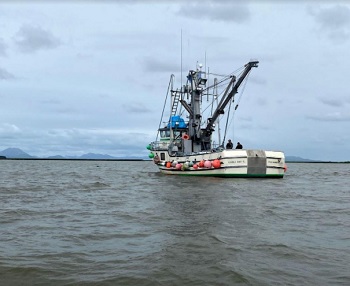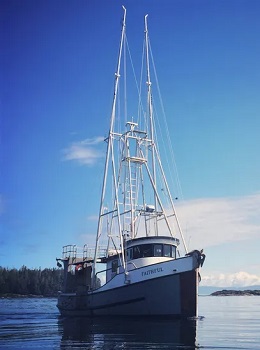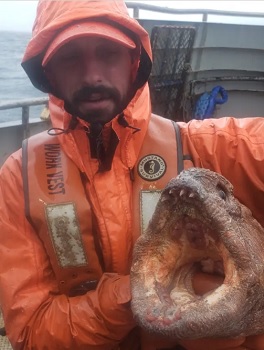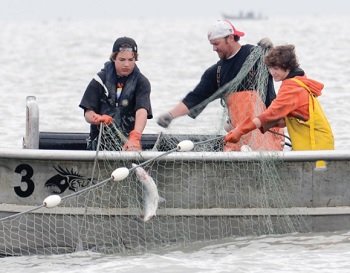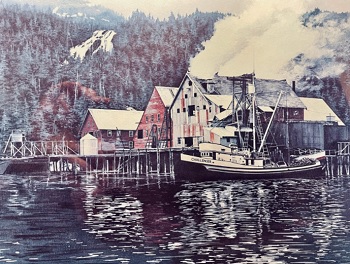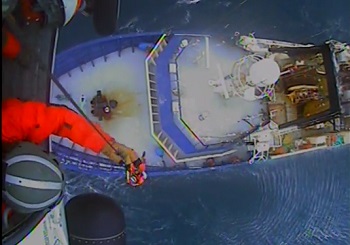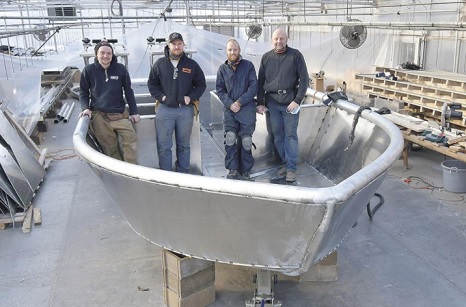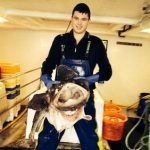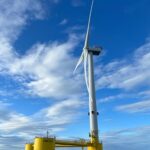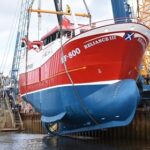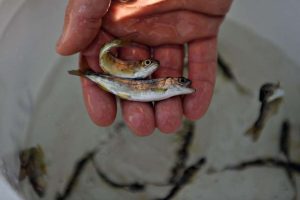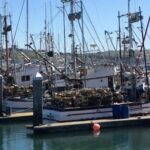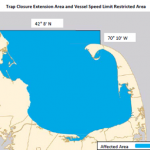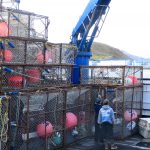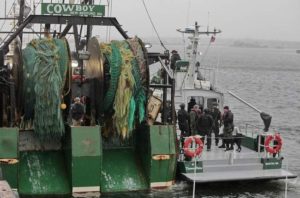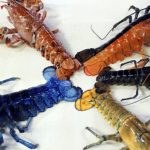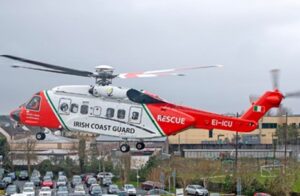Tag Archives: Alaska
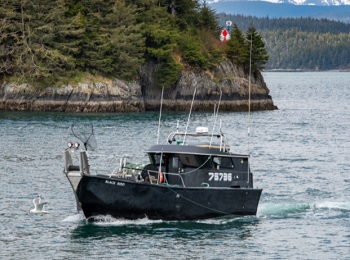
Copper River set for 24-hour opener on June 28
Commercial fishing on the Copper River begins an eighth opener on Monday, June 28, for a 24-hour drift gillnet fishery. The announcement on Saturday, June 26, from the Alaska Department of Fish and Game’s Cordova office,,, All the Monday openers begin at 8 a.m.,, Preliminary harvest estimates for Prince William Sound, including the Copper River, as of Saturday, June 26, included 7,548 Chinook, 333,667 sockeye, 489 coho, 588,533 chum and 2,166 pink salmon. >click to read< 08:40
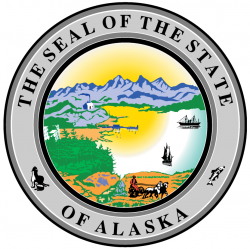
State government shutdown could close Alaska fisheries – “And with that, that summer fishery does not commence.”
If Alaska state leaders can’t resolve an impasse over the budget, large swaths of state government will shut down in July. That could include Alaska’s lucrative summer salmon fisheries, which is causing concern across coastal communities. Southeast Alaska’s summer salmon troll fishery opens July 1. That’s the same day nearly 15,000 state workers could be out of work. Among those is Grant Hagerman, a state fisheries biologist managing the fishery from Sitka. “We’re planning not to be here on July 1 unless we hear differently,” Hagerman said. “And with that, that summer fishery does not commence.” >click to read< 08:37
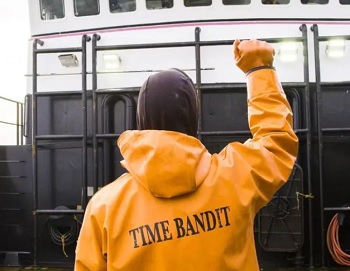
What do Deckhands earn and get paid on ‘Deadliest Catch’ and in the commercial crab industry?
There’s definitely money to be made in crab fishing, more if you star in a popular show about crab fishing. And the crab fishing industry is lucrative. While this is just a snapshot, it’s a pretty eye-opening one. According to a 2006 report, 505 commercial fishermen brought in over $127 million worth in crab loot. If that was evenly divided, it’d be $250,000 per person, but of course, things don’t work out that way. “Wages are often based on a share or percentage of harvest earnings. Newcomer deckhand earnings range from 1.5% to 10% of the adjusted gross catch, depending on location and type of fishery and the skills the worker possesses.” And it’s also situational: some crab fishers can make $50 to $100 a day as a flat rate if they want to play it safe. >click to read< 15:45
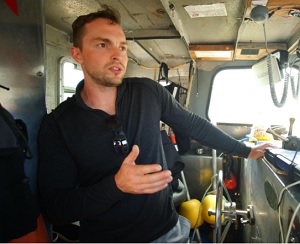
Halibut fisherman encounters freak storm on trip back from Togiak
“At some point I’m thinking my arm’s failing, my body’s cramping and I’m losing control in my dexterity,” recalled Kaleb Westfall, captain of the F/V Peter. “Those thoughts creep into your head that you can’t do this forever. You are going to fail and it’s hard to multitask and disallow those thoughts and I had to put it to one wave at a time.” >click to read< 10:55
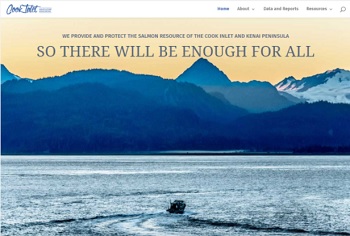
Common property
Almost four decades ago, a Juneau salmon seiner by the name of Wayne Alex filed a lawsuit aimed at blocking the state of Alaska from taxing commercial fishermen to finance hatcheries. The tax, which the Alaska Legislature obliging called an “assessment” in an effort to avoid an Alaska Constitutional prohibition on dedicated taxes, was intended to benefit private, non-profit aquaculture corporations controlled by commercial fishermen. As the scheme was designed, the hatchery corporations, or “associations” as they were officially called, would run a system of hatcheries to fill the ocean off the 49th state with a bounty of “common property” salmon to benefit Alaskans of all sorts – commercial fishermen, personal-use fishermen, sport fishermen, even subsistence fishermen. Though Alex sued over the tax, it wasn’t his real concern. His fear was that the hatcheries would one day come to replace fishermen like himself. Jump ahead now 39 years and turn your attention north from Juneau for 550 miles to the city of Seward at the head of Resurrection Bay. >click to read< 16:01
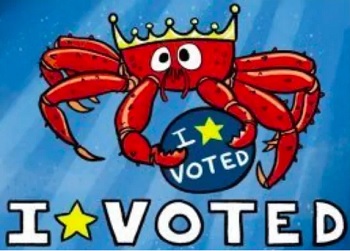
Seafood favorite? Division of Elections launches mock election to help Alaskans learn how to vote confusing ballot in 2022
With Alaska’s new Ballot Measure 2 having passed in November, confusion reigns about how the elections will be conducted in 2022. Ask the average Alaskan who voted for Ballot Measure 2, and you’ll get a mangled description of how it actually works. But the Alaska Division of Elections has set up an easy-to-use mock election that can help Alaskans better understand how they’ll be voting in the primary, and then how they’ll vote in November, 2022. The commenters there are not impressed! >click to read< 09:28
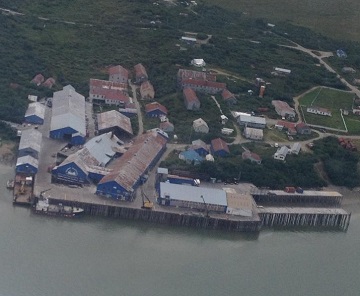
Alaska: 131-year-old fish plant, other sites to be considered for National Register of Historic Places registry
Alaska’s longest-running fish plant facility, the Diamond NN Cannery, is among the nominations for the Alaska Historical Commission to consider passing on to the National Register of Historic Places. The South Naknek cannery operated almost continuously from 1895 to 2015. “There’s 51 buildings still standing … it’s that each building tells a story,” The village site is believed to date back as many as 6,000 years. In the 1890s, the village was permanently settled as a fishing community. >click to read< 1921
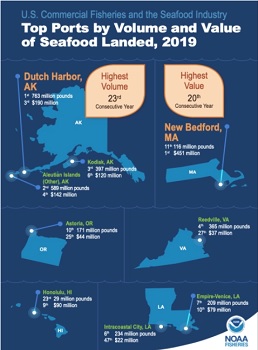
New Bedford is America’s number 1 fishing port for 20th straight year
The National Marine Fisheries Service released its annual report on the health of the nation’s fishing industry on Thursday,,, New Bedford ranked No. 1 for the value of seafood landed at its port for the 20th consecutive year in 2019, with $451 million worth of fish hauled in by its boats. That was up by $20 million compared with the year before, and far outpaced the second-ranked Port of Naknek, Alaska, which had $289 million worth of landings. NOAA officials said New Bedford’s dominance remains driven by sea scallops, which account for 84% of the value of all landings there. >click to read< 14:21
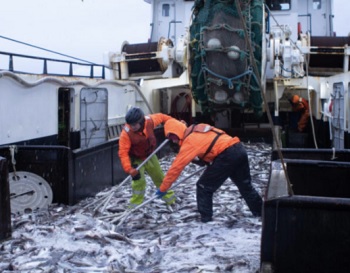
Alaska Supreme Court upholds legality of fish landing tax
Fishermen’s Finest, a Washington state seafood company that operates factory trawlers and exports most of its product overseas, had challenged the state’s tax in court. It argued that there are protections against state taxation on shipping in coastal state waters, and a lower state superior court agreed. But the justices, writing in a unanimous opinion, found that the fees assessed on Fishermen’s Finest’s products are not unconstitutional “The landing tax is not opportunistic taxation of vessels ‘merely transiting’ adjacent waters without landing or benefitting from any local services,” the justices wrote. >click to read< 08:56
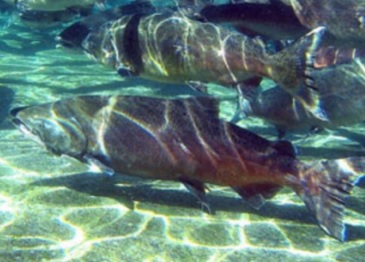
Retailers post prices for Copper River salmon
As commercial harvesters brace for the famed Copper River salmon fishery set to open in mid-May, with indications of a declining run, they’re hoping for the best, forecasts notwithstanding, and aficionados of the oil-rich fish are lining up to order. “It is that time of year when the phone is ringing off the hook for the Copper River season,” said Hilary Branyik at Pike Place Fish Market in Seattle.,, 60° North Seafoods in Cordova has not set its Alaska retail price yet, but for its sales through Sena Sea Seafoods in Washington state the preorder price is $54 a pound for sockeye fillets and $68 a pound for king fillets. >click to read< 12:38
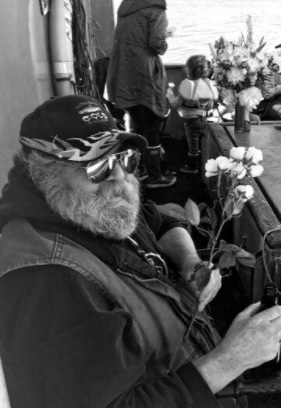
Obituary: Alaska – Commercial Fisherman Larry Miller
On Friday, April 16, Larry Miller, loving brother, uncle and friend passed away at his home. He was 66 years old. Larry was born in North Dakota to LeRoy and Joan Miller on August 8, 1955. The family moved to Montana where he attended Helena High until moving to Alaska in 1973, where he discovered the love of his life, commercial fishing. He longlined halibut, black cod and rockfish with his family for years, as well as stints at seining, crabbing, shrimping and at just about anything that would keep his feet wet. >click to read< 08:39
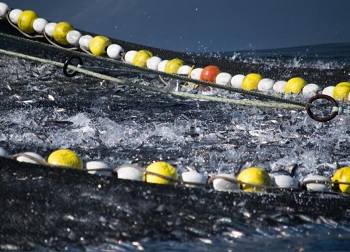
Something ‘fishy’ about state’s herring data, argues a former Sitkan
The Sitka Sound Sac Roe Herring Fishery closed last week, but not before harvesting around 16,000 tons of herring, the biggest commercial harvest in nearly a decade. Commercial fishermen want the lucrative fishery to continue. And while the state is in the middle of a lawsuit with the Sitka Tribe of Alaska over the management of the fishery, the state maintains that its model is conservative. But the model has its critics. >click to read< Was the 2021 Sitka herring fishery built on irrelevant data? Was a slaughter of older herring the result? How risky could that be, anyhow? fishy numbers: an inquiry – Peter Bradley >click to read<14:55
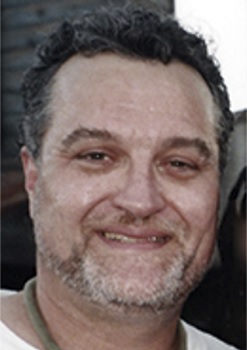
Commercial Crab Fisherman David Anthony Sherwood, Kodiak Island, Alaska
Dave born in Mankato, Mn on January 1, 1957 passed away unexpectedly in his sleep on April 1, 2021. He attended high school at Mankato West where he excelled at swimming and tennis. He joined the Army which took him to Hawaii. Upon completion of his service he stayed in Hawaii for many years. He traded the Hawaiian island for Kodiak Island, Alaska. Dave’s life was bound to Alaska where he was a crab fisherman on the Bering Sea for many years. Our family was on the receiving end of many of his “catch” as he would send home huge boxes of the biggest and best seafood we had ever seen or eaten. >click to read< 09:26
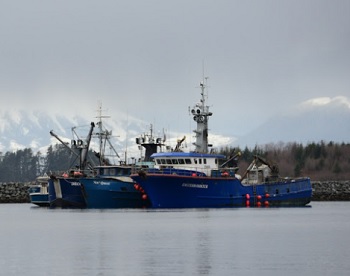
Commercial herring fishery winding down
The Sitka Sound Sac Roe Herring Fishery is winding down, and state biologists expect to close the fishery soon. In an interview on Thursday (4-8-21), Area Management Biologist Aaron Dupuis said the Alaska Department of Fish and Game is shifting out of “active management” mode. “We’re still going out there. We’re flying, we’re monitoring the commercial fishery. We’re not leaving it alone to do its thing,” he said. “So we’re definitely on top of this, but it’s for sure winding down. I’d expect it to go another day or two tops.” >click to read< 08:46
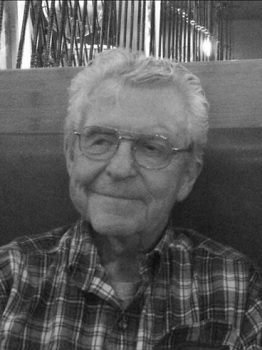
Obituary: Nevin Stanley May, Ketchikan, Alaska – Commercial Fisherman
Born in Prentice, WI, Nevin came to Ketchikan in 1967. In his words, “I thought it was the greatest place you could imagine. It was wide open, you could do just about anything you wanted.,,, Nevin began his storied career as a commercial troller soon thereafter and continued for more than 40 years, selling the F/V Cheryl in 2012. Through his years fishing, he made friends (and probably some enemies too!) with local, state, and federal politicians, and helped to shape some of today’s fishing regulations. He co-founded the Alaska Trollers Association and was a board member for several years. He was also a member of the Seafood Producers Co-Op, and served as chairman of the board from 2001-2002. Nevin was an avid hunter, both locally and nationally. >click to read< 10:05
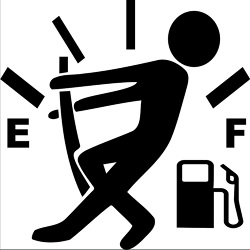
Bering Sea Island’s Fuel Shortage Forces Crabbers South To Refuel – “I don’t think we’ve ever seen anything like this,,,
The Coronavirus pandemic has already disrupted Alaska’s winter Bering Sea fishing seasons, closing plants and adding quarantine related complications for crews. St. Paul, one of the Pribilof Islands, announced the gas ration late last month after bad weather canceled the arrival of a fuel barge, and fishermen say it’s forcing them into days-long detours for refueling. “I seem to remember we had some rations, years back, but it was nothing like this,” Oystein Lone, the captain of a 98-foot crab boat, He and his five-person crew on the F/V Pacific Sounder just started fishing for bairdi, also known as tanner crab, on the eastern side of the Pribilof Islands in the middle of the Bering Sea. >click to read<10:03
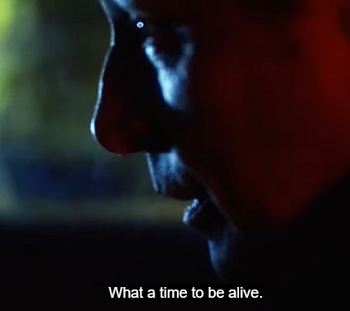
Deadliest Catch season 17 – What a Time to be Alive!
In season 17, Discovery says that “half the crab boats of the Bering Sea fleet are tied up in Seattle” while “an existential threat faces the fishermen who make the long-haul trip to Dutch Harbor, Alaska,” because they face “a potential closure of the entire fishery” for the 2021 season. The crab survey conducted during the summer by the Alaska Department of Fish and Game didn’t happen because of C0VID-19, and that means “the captains will be fishing blind with no charts or guidance on where to find crab on the grounds, making an already challenging season even more difficult,” short trailer, >click to read< 10:03
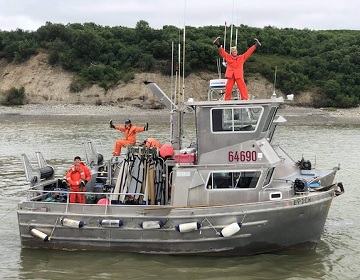
The Alaska Wilderness Prepared Me For Coronavirus
Every summer I make the long trip up to Naknek, Alaska — an outpost of human settlement among the tundra, volcanoes, and wildlife of southwestern Alaska to be part of the commercial sockeye salmon fishing season in Bristol Bay. From the airport at King Salmon, we drive the lonely stretch of pavement a half hour north, to the boatyard in which the Epick, a 32-foot-long, aluminum-hulled gillnetter that I call home for several weeks out of the year, resides through the winter. My crew and I prep the boat and put her in the water, where we make use of the abundance of daylight typical to Alaskan summers to try and catch as many salmon as possible. >click to read< 11:47
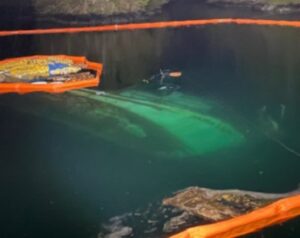
A Commercial Fishing Vessel Sinks – Coast Guard responds to diesel fuel discharge near Sitka, Alaska
The Coast Guard is responding to a report of a diesel fuel discharge, Tuesday, after a vessel sank near Sitka, Alaska. Sector Juneau personnel received a report, February 27, 2021 at 2 p.m., that the 52-foot fishing vessel, Haida Lady, sank and was completely submerged between Cobb Island and Silver Point South of Sitka, Alaska. The vessel reportedly discharged an unknown amount of unrecoverable diesel near Cobb Island. Photos, >click to read< 17:42
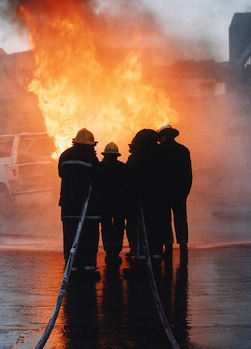
SAFETY: A gradual culture change has been taking place across much of the fishing industry
As one of the world’s leading insurers of fishing vessels, Sunderland Marine keeps a close eye on the fishing industry’s evolution and has encouraged increasing safety awareness. Sunderland Marine has taken the initiative where it has seen that improvements can be made,,, This is not just in the UK, but also through initiatives in Australia and New Zealand, both of which have also seen a safety culture developing in the right direction In the US, Sunderland Marine has also been instrumental in making available independent safety drills for crews working on East Coast draggers and scallopers. In addition, the offshore crab fishery that’s familiar to anyone who has seen the Deadliest Catch on TV has seen positive changes. photos, >click to read< 17:32
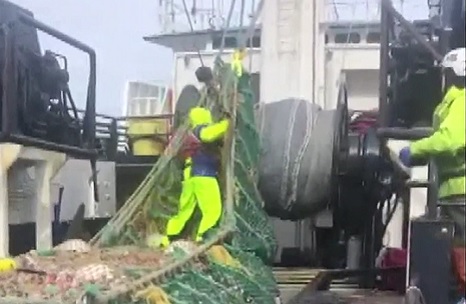
Video Interview: Life for a Mainer fishing in the Bering Sea
Taylor Strout is the son of a fisherman; fishing simply runs in his blood. He is on a boat that fishes out of Dutch Harbor, Alaska,,, Taylor is a mate aboard the Fishing Vessel Northern Defender which, when we talked, was tied up at the dock in Dutch Harbor. The Aleutian Islands split the Pacific Ocean and the Bering Sea, and they fish the Bering Sea. As the crow flies, he is more than 4000 miles away from home. “It’s kind of a different level of 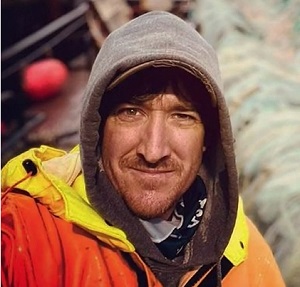 fishing out here.,, “You’re basically towing a football field behind you. You’re taking everything up to a bigger scale when you’re on some of these boats. Bigger weather, there’s bigger seas, sometimes we fish in 15 foot waves to 25 foot waves.” >click to read< 14:44
fishing out here.,, “You’re basically towing a football field behind you. You’re taking everything up to a bigger scale when you’re on some of these boats. Bigger weather, there’s bigger seas, sometimes we fish in 15 foot waves to 25 foot waves.” >click to read< 14:44
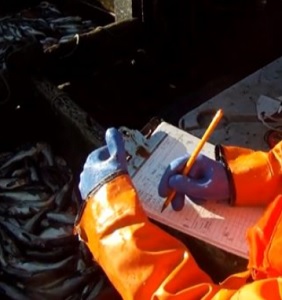
‘Trapped’: Women Working as Fishery Observers Allege Sex Harassment, Assault at Sea
She had overcome the seasickness, the unreliable shifts, and the long hours that drive many people out of the business. But she didn’t sign up for 3 1/2 weeks of harassment. On the ship that served as both her workplace and temporary home, Kim, then in her mid-20s, was constantly catcalled, hit on, and leered at, with no place to escape. Four women, including Kim, who worked on the front lines of fisheries monitoring in Canada, say they were dropped into a hellish grind of sexual harassment, assault, intimidation, threats, and horrifying animal abuse while they watched helplessly. >click to read< 10:15
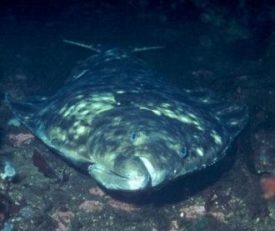
Halibut catch limits soar for Central Gulf fishermen
The International Pacific Halibut Commission (IPHC) completed its 97th Annual Meeting in Seattle, Washington, on Friday (Jan. 29), with decisions on total halibut mortality, fishery limits, fishing dates, and other fishery regulation changes for the upcoming season… The 2021 Pacific Halibut commercial fishery catch limits went up significantly for fishermen in the regulatory Area 3A, the Central Gulf of Alaska, with a 26.95-percent increase from just over 7-million pounds available in 2020, to nearly 9-million pounds this year. All other areas but two saw an increase in poundage from last year. Canadian fishermen in Area 2B get a two-percent increase, equivalent to 11,000 pounds. >click to read< 17:26






